BMW uses high-quality tires with an impressive service life, though mileage varies based on use, location, and tire type.
BMW tires usually last 30,000 miles, though sometimes longer. Tires should be rotated every 5,000 to 7,500 miles, and you should have them balanced frequently. Tire life can be extended by keeping air pressure within the recommended range at all times.
In this article, we'll go over the average tire life of BMW vehicles, and we'll cover the tire brands that BMW prefers to use on its cars from the factory. Additionally, we'll cover the typical tire types and sizes used by common new and late-model BMW vehicles.
We sourced the information used in this article primarily from BMW itself, and we also spoke with a BMW parts expert to confirm details about tire size and make.
BMW does not produce the tires it uses on its vehicles. It's an auto company that produces most of the parts for its cars—just not the tires.
Instead, BMW uses tires made by other major manufacturers, as outsourcing keeps the costs low and the quality exceptionally high. This practice is used by all other major automakers.
BMW chooses tires for its vehicles carefully. The tire size and tread type are matched to the car to ensure optimal performance. Most tires used on BMW vehicles are all-season tires.
BMW tires last between 25,000 and 30,000 miles, assuming you follow the recommended tire rotation and alignment schedule. Also, keeping your tire pressure at the right PSI will extend the life of your tires. Usually, that's one to four years of tire life.
Some owners have reported getting 30,000 or 40,000 miles out of their tires, though this usually isn't the best idea. It's best to replace your tires at the selected intervals, as the tread on-road tires are not particularly deep, and they become slick and hazardous if driven too long.
BMW owner's manuals and dealerships agree that you should rotate your tires once every 5,000 to 7,500 miles. Generally speaking, this is about how often you should rotate any kind of road tires—but it's especially important on BMWs because they use premium tires that cost more than standard highway tires.
Generally speaking, this is about how often you should rotate any kind of road tires—but it's especially important on BMWs because they use premium tires that cost more than standard highway tires.
Tires should be replaced when the tread depth reaches 3mm or less, as this is when tires become slick and pose a hazard (especially during wet weather). Additionally, the rubber in the tires decomposes slowly over time, which increases the chance of a blowout.
Do BMW summer tires have a different lifespan than all-season tires? And if so, what's the difference? This is a common topic of discussion on BMW forums, and the answers seem to vary between people and locations.
Generally speaking, you'll probably get more use out of all-season tires than winter tires. Although all-season tires are made with softer rubber (to compensate for the hardening effect of cold weather), they have deeper tread. Thus, the deeper tread doesn't wear out as quickly.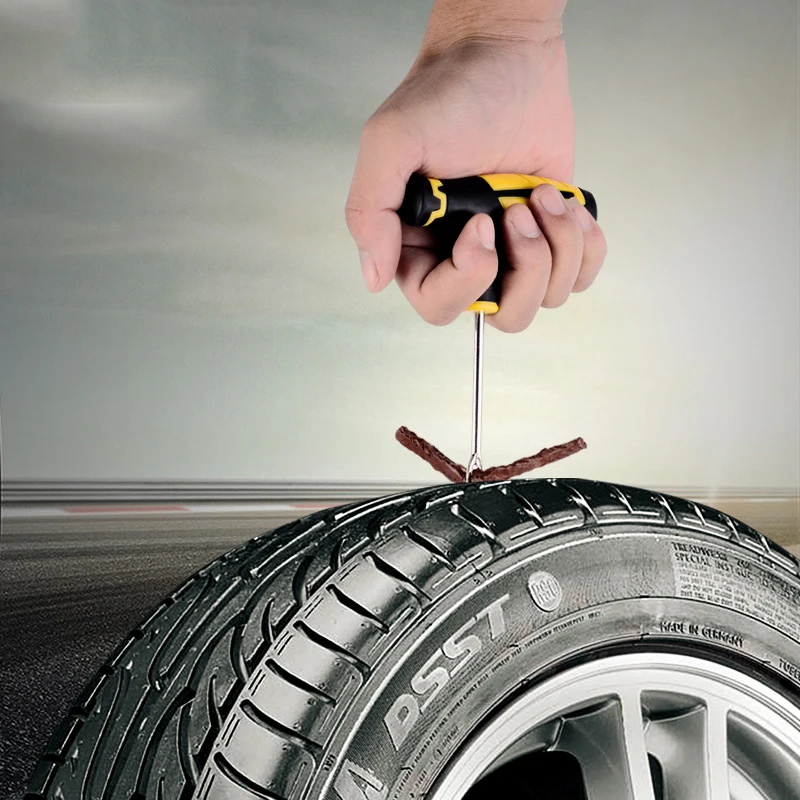
This is less true in areas that salt or dirt the roads during the winter, as the additional friction caused by sand and salt wreak havoc on tire rubber of any kind.
But in areas with more mild climates, all-season tire life seems to be a bit longer, though sometimes the differences are too minute to consider.
Yes, BMW only uses good-quality tires on its vehicles. BMWs are known for their 'driving machine' precision, and road handling capabilities and tires are a huge part of that. Most used BMWs also come with high-quality tires, as the driving experience can change rapidly without them.
BMW uses some of the most costly and well-made tires available, but it isn't loyal to one particular brand. The tires found on an individual new BMW vary based on location and regional weather characteristics.
For example, in cold climates, new BMWs come with tires that are better suited to dramatic temperature changes. The same holds true in especially hot or wet climates.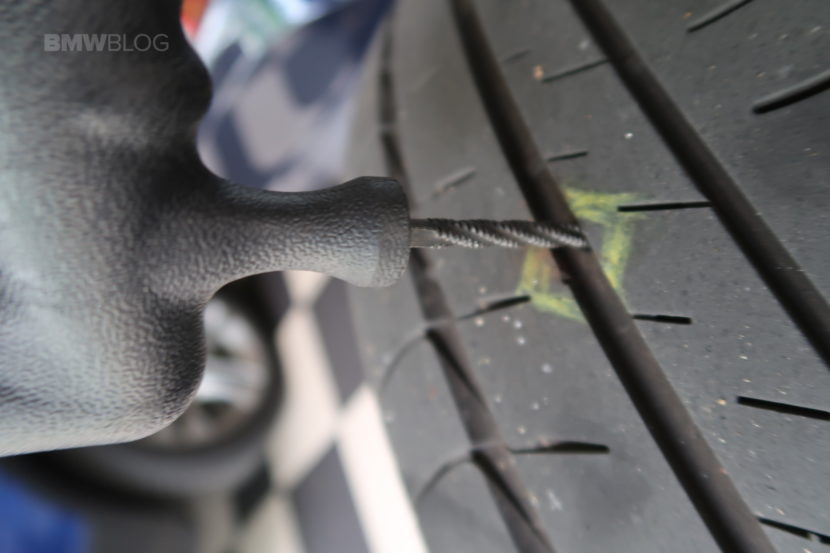 Tire brands also vary between vehicles, and BMW parts departments stock multiple tires makes in different sizes.
Tire brands also vary between vehicles, and BMW parts departments stock multiple tires makes in different sizes.
The exact tire size and brand varies between vehicle models and years. The most common tires used on BMW vehicles are made by Michelin, Goodyear, and Pirelli. These are top-tier tires and some of the best on the market.
New and late model BMW 3-Series vehicles use P225/50R17 or P225/45R18 tires, except the M3, which uses P275/40R18 tires on the front and P285/35R19 tires on the rear.
BMW 4-Series sedans use P225/45R18 tires. These are similar in size to the P245/45R18 tires used by the new BMW 5-Series and also last just as long as the 3-Series tires.
New and late model BMW 5-Series vehicles use P245/45R18 tires. These are larger than the tires on most BMW 3-Series vehicles, but their size doesn't affect their longevity.
BMW 8-Series vehicles are like the M-variants of the 3 and 5 series and use different tires on the front and rear. On the front wheels, the BMW 8-Series uses P245/45R18, which are the same size as stock 5-Series tires. In the rear, the 8-Series uses P275/40R18 tires, which are better for traction.
The BMW X-Series is a line of larger SUVs that use taller and wider tires than the typical BMW sedans and coupes. The new BMW X3 uses P225/60R18 or P245/50R19 tires, and the BMW X5 uses P256/50R19 or P275/45R20 tires.
Yes, rear-wheel-drive BMW vehicles can usually expect a bit more life out of their four tires. This is because the rear tires, which get power from the engine, wear out faster—but regular tire rotations spread the wear evenly across all four.
All-wheel-drive BMW vehicles add extra wear to the front tires, so they wear out somewhat faster than cars with power to only the rear wheels. The exception is with vehicles that use different tires in the front and rear (like the BMW M3) as the wider rear tires can't be rotated to the front.
The exception is with vehicles that use different tires in the front and rear (like the BMW M3) as the wider rear tires can't be rotated to the front.
Yes, many new and late-model BMWs come from the factory with run-on-flat or 'run-flat' tires. You can drive on run-flat tires at limited speeds and for a short distance if they go flat, allowing you to get to a tire shop without requesting a tow.
In many cases with modern cars, these tires are used as a substitute for a spare tire or an inflator kit. This is common practice, even for BMW—as all-new BMW vehicles that come equipped with run-flat tires don't come with a spare.
Generally, new BMWs don't come with a tire repair kit. This is in contrast to earlier BMW models, which very often came with a spare tire. But why don't new vehicles come with an inflator or repair kit?
The reason is simple—most BMW owners live in cities or areas with repair infrastructure close by, so there's really no need to include a spare tire.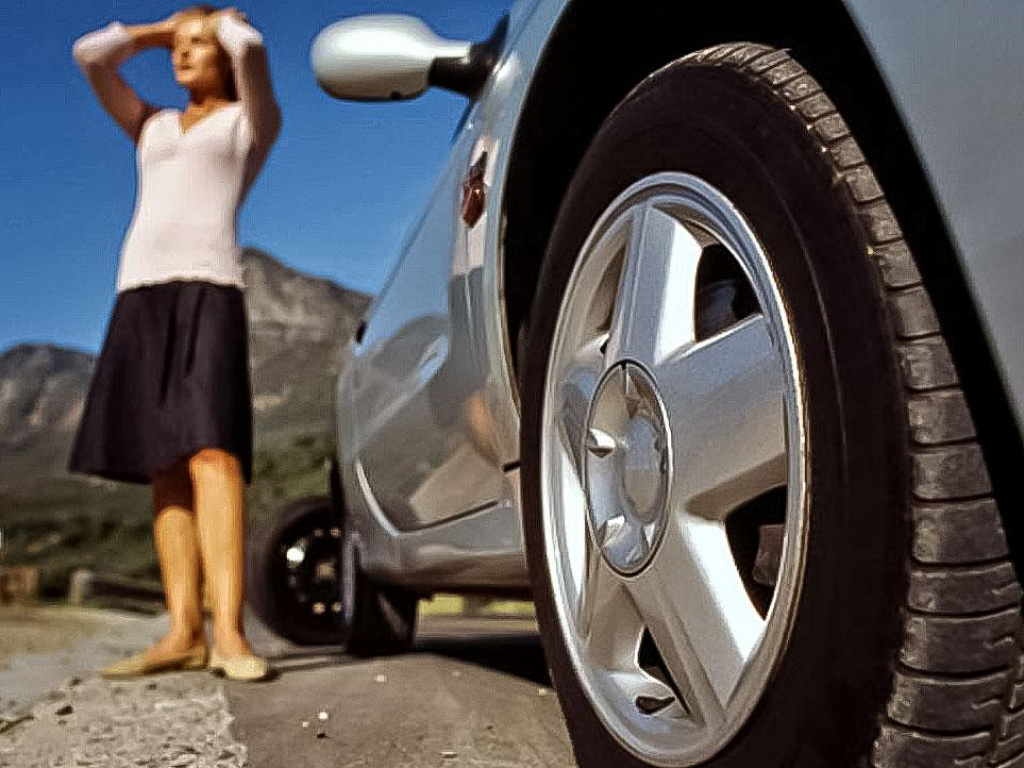 This isn't great for people in rural areas, but run-flat tires meet the need well enough.
This isn't great for people in rural areas, but run-flat tires meet the need well enough.
Typically, run-flat tires are more expensive than conventional tires, but they can save the cost and inconvenience of changing a flat tire.
Because run-flat tires permit continued operation without air pressure, they do not include a spare tire. Therefore, run-flat tire users must be prepared to repair or replace the damaged tire to continue driving.
Bridgestone offers a variety of run-flat tire technologies that provide additional benefits over other types of run-flat tires. These include our Run-Flat Technology and Self Supporting Run-Flat (SSR) Technology.
This means that if you are driving above 50 mph and experience a flat tire, you should reduce your speed immediately and begin driving below 50 mph.
It is important to note that if your run-flat tire is driven while flat, it can be damaged beyond repair, which could cause tire failure.
Table of Contents
It depends on the type of run-flat tire you have. There are three types of run-flats and they are as follows:

In general, if you drive less than 10,000 miles per year, you should replace your run-flat tires every six years. If you drive more than 10,000 miles per year, you’ll want to replace your tires every three to four years.
If you drive a car with run-flat tires, you may have questions about its longevity. Consumer Reports’ own testing and those of the U.S. Department of Transportation’s National Highway Traffic Safety Administration have shown that all tires wear out over time.
If a tire is driven to its treadwear limits, it will be worn out and no longer effective at gripping the road, regardless of whether it is a conventional tire or a run-flat-tire.
The good news for run-flats is that owners won’t experience the large reduction in tread depth that occurs when conventional tires lose air pressure and go flat before reaching their treadwear limits.
But many drivers who use run-flat tires are concerned about experiencing problems with their tires wearing prematurely or not lasting as long as conventional tires, especially if the owner has had issues with specific models.
Owners of BMW 3 Series and other BMWs with run-flat tires often write to us asking why they need new tires so soon after buying new ones — sometimes even though they have more than half their tread life left, based on our tests.
In most cases, it isn’t because the tires wore out prematurely; it’s because they never had enough tread depth, to begin with.
BMW Run-Flat Tires – BMW Tire Life and Replacement
BMW run-flat tires can be confusing for drivers. These tires are designed to run without air, but unlike a spare tire, they aren’t meant to last forever. In fact, a run-flat tire should only be driven 50 miles before being replaced.
If you wonder how long will a BMW run-flat tire last, the answer depends on several factors:
Collision: A run-flat tire can withstand some collision damage because it is designed to stay inflated when punctured. However, if you hit something hard enough to break the rim or deform the sidewall, your tire needs to be replaced immediately.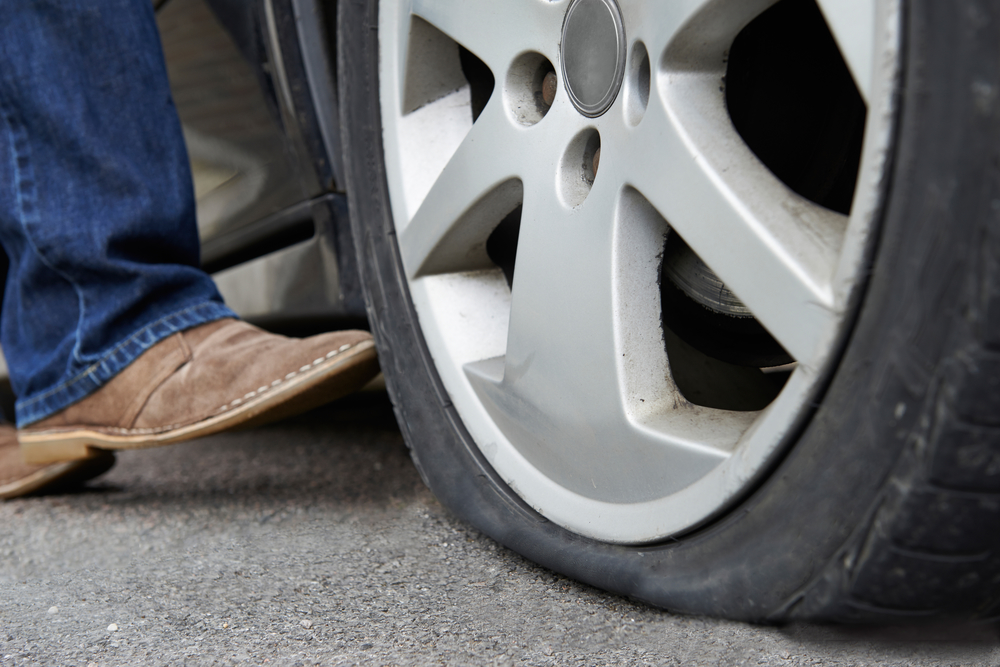
Hail: BMW recommends replacing your run flats after driving through hail. Hail can cause tiny cracks and punctures in your tires that could result in a blowout down the road.
Loss of Pressure: If your tire loses pressure or becomes flat while you drive, this indicates a dangerous problem that must be addressed immediately by replacing your tire.
The run-flat tires are designed to last longer than the standard ones. So, if you have the run-flats in your car, expect them to last longer than the standard counterparts. BMW has rated its run-flats to last a bit longer with a mileage of 50,000 miles.
The short answer is yes, you can repair a slow leak in a run-flat tire, but it’s not quite that simple. The type of repair depends on the location, type, and size of the puncture.
If a sharp object has gone through the sidewall or tread to the inside of the tire, then there’s no option – this is an unsafe tire and needs replacing.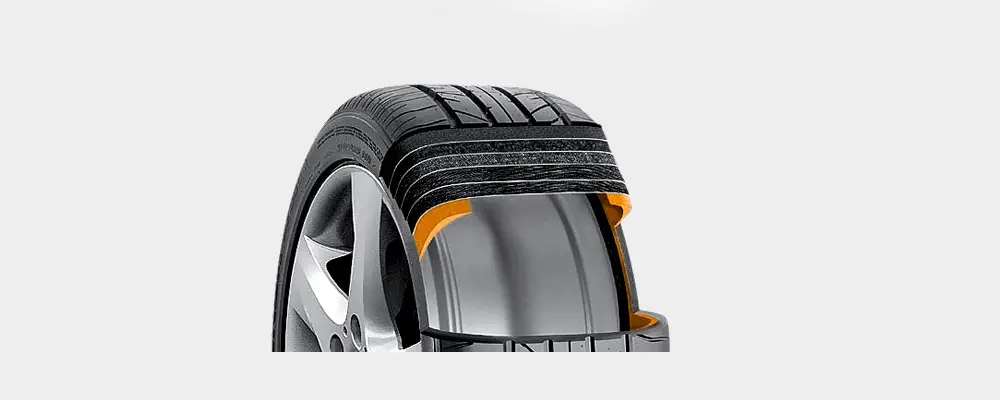
If the puncture is in the tread then our experts will decide what kind of repair is possible based on how deep the object went in. If it was just on the surface, then a safe patch can be applied from the inside of the tire.
If it went deep into the tire, then we can do a patch plug if it’s no more than 1/4 inch across. Another option, if it’s just too big to patch plug, would be to shave off part of the tread where it punctured and patch it with a regular steel and rubber plug. This would still leave you with enough tread depth to be safe for use.
If you drive an older car, a vehicle with conventional tires, or a luxury car, chances are it doesn’t have run-flat tires.
As a rule, run-flat tires aren’t available on many vehicles made before 2005. However, some newer vehicles come with conventional tires rather than run-flats because the manufacturer believes the vehicle is better off without them.
In addition to being more expensive than regular tires, run-flats typically affect the ride quality and braking performance of a vehicle.
For this reason, many luxury brands believe that cars equipped with run-flats simply don’t deliver the same level of driving comfort as those with conventional tires.
If you’re not sure if your vehicle is equipped with run-flat tires, do an online search for your year/make/model along with “run-flat tires.”
If you see photos or descriptions of your vehicle with non-run-flat tires, then you don’t have them. Or look at your owner’s manual or call your dealer to confirm what type of tires you have.
In general, run-flat tires should be replaced if they have been driven for more than 50 miles (80 km) at a maximum speed of 50 mph (80 km/h).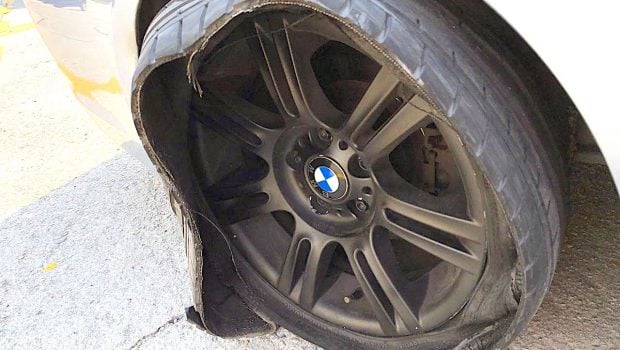
A tire that has been driven in this manner should be inspected by a tire professional before being returned to service.
BMW vehicles use run-flat tires. The reason for this is that run-flat tires can be driven with a puncture at moderate speeds (around 50 mph) for approximately 150 miles.
This allows the driver to get to a safe location, or to make it home before changing the tire. There are many advantages to using run-flat tires.
Run-flats feature reinforced sidewalls that allow them to support the vehicle’s weight in the absence of air pressure.
This means that drivers won’t have to attempt roadside repairs and can avoid having their vehicles towed as they would with a standard tire.
The reinforced sidewalls also protect the wheel rim from damage and help prevent blowouts, even when the tire is being driven without any pressure at all.
For BMWs, run-flat tires were a natural fit because of the company’s long history of creating high-performance luxury cars and SUVs.
BMW vehicles are known for their superior handling and performance, which is achieved in part by low-profile tires that provide better traction and improve cornering ability.
Yes, you can replace your BMW’s run-flat tires. With regular tires on your BMW, you will no longer have the option to drive with a flat tire.
However, with conventional tires, you will still be able to drive after a puncture and not ruin your wheel rim. The main disadvantage of conventional tires is that they tend to go flat more often, but with a spare tire on hand, the inconvenience is minimized.
Some people prefer to replace their run-flat tires because they believe that they offer less traction, ride comfort and tread life than normal tires.
It is also possible to replace just two tires instead of all four. We recommend replacing two tires at a time if they are worn down and it is necessary to replace them.
I would strongly advise you not to replace your run-flat tires with regular tires.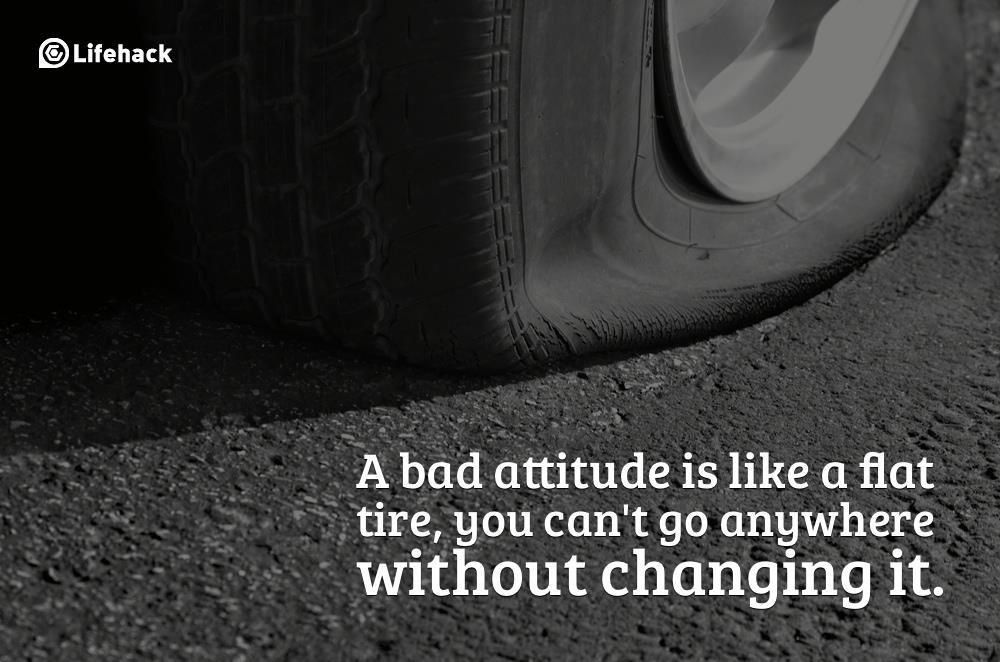 On cars that are equipped from the factory with run-flat tires, damage can occur to the suspension if you do this.
On cars that are equipped from the factory with run-flat tires, damage can occur to the suspension if you do this.
The engineers at BMW designed the suspension with run-flat tires in mind and it will ride rougher with regular tires installed.
The short answer is yes, they do. Run-flat tires are supposed to be inflated to the same pressure as standard tires.
The difference is that run-flats will continue to support the weight of the car for a certain period of time and at a certain speed when they are flat (or nearly flat). In other words, you should still treat run-flat tires like any other tire.
The only way you can tell if your vehicle has run-flat tires is either by reading the side of the tire or by looking in your owner’s manual.
Run-flat tires are capable of supporting the weight of your car for a brief period of time without air pressure. However, if you know you’ve driven on a flat tire, you should have it inspected and repaired before driving again.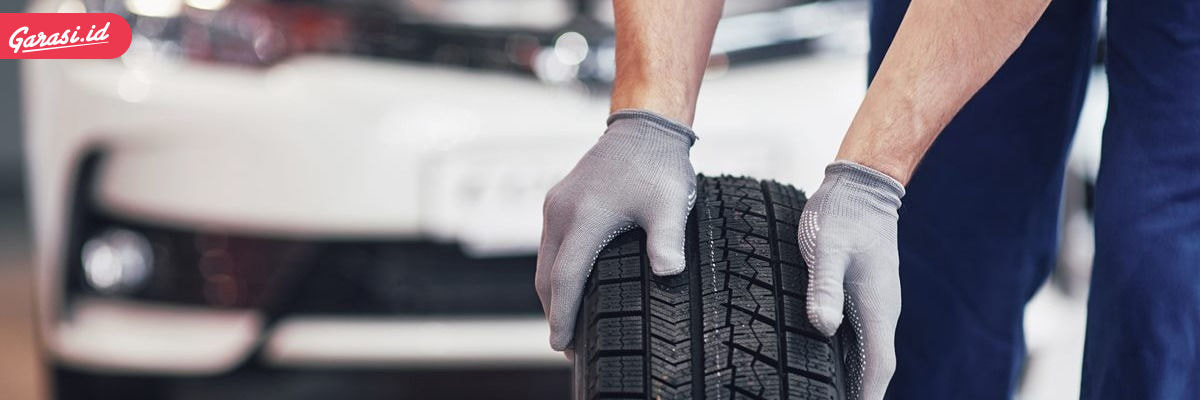
Here’s what that means: If you’ve been driving on a deflated tire for several miles, your tire might still be holding air.
It can do that because of the sidewall reinforcement technology built into run-flats. And that means you might not notice that anything is wrong until it’s too late.
Run-flat tires are not inherently noisy. However, they do offer advantages that you get in exchange for a little extra noise.
A run-flat tire is designed to continue operating after losing pressure and deflating. They do this by using a reinforced sidewall that can support the weight of the vehicle, even when the rest of the tire is deflated.
A vehicle that’s designed for run-flat tires isn’t supposed to need a spare. If a tire is punctured and begins to leak, the reinforced sidewalls in a run-flat tire allow you to continue driving for a short distance.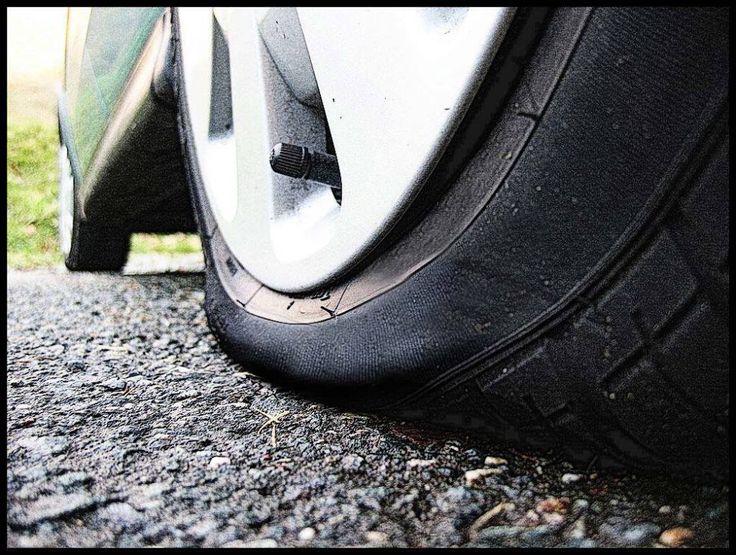
All the weight of the vehicle is transferred onto the run-flat, so it needs to be strong and stiff. At higher speeds, though, the sidewalls flex more — creating heat. So you can’t expect them to hold up indefinitely when flat.
Run-flats also have a maximum speed limit when driven with no air pressure: 50 mph for most brands. If your tire loses pressure at highway speeds, replace it as soon as possible; driving for any distance or time with no pressure increases the chance of damage to the tire’s sidewall and other structural components.
The most common cause of run-flat tire failure is punctured. A small puncture can be repaired without any loss of pressure since it is often in the sidewall sufficiently far from the bead.
However, larger punctures can lead to a complete loss of pressure over time and damage to the tire’s structure.
Oleg Rastegaev
Photo: Dmitry Pitersky
Expert group: Andrey Mokhov | Oleg Rastegaev | Yaroslav Tsyplenkov
How bad is the comfort of Run Flat tires with reinforced sidewalls, on which, after a puncture, you can reach the tire shop? Why are they used today not only by BMW and Mini, but also by Mercedes-Benz, Infiniti, Lexus? We took a Bavarian "three-ruble note" with two sets of tires, "safe" and regular, and went to the landfill.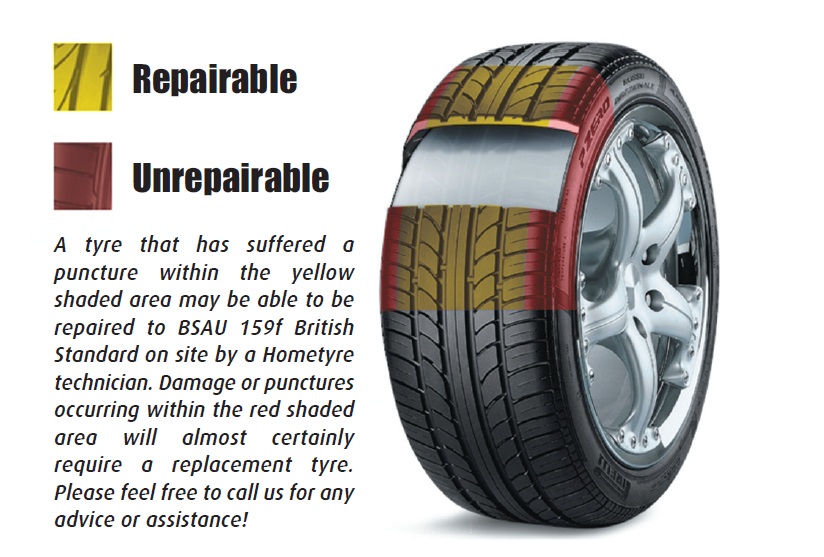
Struggling with punctures in pneumatic tires, already at the beginning of the 20th century, tire manufacturers tried to use porous rubber and bandage rings - but these unpractical solutions took root only in motorsport and in military equipment. It was not until 1973 that Dunlop offered to reinforce the sidewalls with an additional layer of rubber, which, in the event of a puncture, acted as a cushion between the rim and the road and allowed the movement to continue even at zero pressure. The technology was called Dunlop Denovo, reinforced tires were installed as an option for Fiat Panda, Rover P6B cars. Later, the name Run Flat was assigned to these tires - driving on a flat tire, that is, on a deflated tire. And they began to be truly mass-produced only at the end of the nineties of the last century, when the technology was adopted by BMW: Bavarian cars began to be designed without niches for a spare tire at all.
Run Flat tires are not only an additional layer of rubber on the inside of the sidewall, but also a different design of the carcass, bead ring and bead cord adjacent to it spare-document.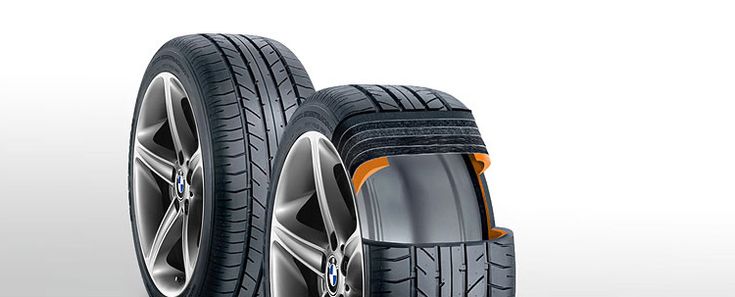 Moreover, it will not just be thrown into the trunk, but placed in a specially equipped niche under the raised floor, which, unfortunately, will significantly reduce the usable volume of the cargo compartment. So is it worth sacrificing the trunk for the sake of driving comfort? And by the way, how safe are run flat tires to drive when flat? I remember very well how, 14 years ago, at the Paul Ricard track, journalists sorted out a flat Pirelli Run Flat tire on a “one” BMW.
Moreover, it will not just be thrown into the trunk, but placed in a specially equipped niche under the raised floor, which, unfortunately, will significantly reduce the usable volume of the cargo compartment. So is it worth sacrificing the trunk for the sake of driving comfort? And by the way, how safe are run flat tires to drive when flat? I remember very well how, 14 years ago, at the Paul Ricard track, journalists sorted out a flat Pirelli Run Flat tire on a “one” BMW.
Pirelli uses the “Run Flat” label, while other manufacturers use more sophisticated abbreviations: RSC (Michelin), RFT (Bridgestone) or SSR (Continental)
Take me, too, Pirelli - a modern model of the Cinturato P7 in dimension 225 /55 R17. Two sets. The one that Run Flat, with reinforced sidewalls, is also marked with asterisks: the tires are homologated for BMW and Mini cars. And the function of the aggregate carrier will be performed by the BMW 320d. His native tires are slightly lower, dimensions 225/50 R17, but may the tire gods forgive us for a five percent difference in profile height.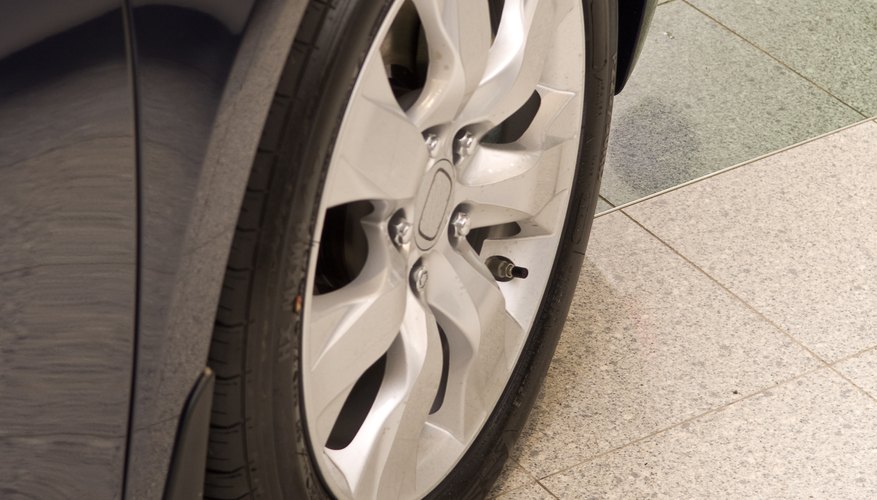
Due to the stiffer sidewalls and developed humps, it is more difficult to mount Run Flat tires. Beading Run Flat tires is, of course, more difficult: not only is the sidewall much stiffer, but also the humps are higher (these are the tides that prevent the tire bead from sliding into the inner rim stream). The wheel designed for regular tires has a hump height of 5 mm, while the one designed for Run Flat tires has a hump height of 6.2 mm. But even our ten-year-old tire changer coped with the task.
The wheel of the Krasnoyarsk company K&K (left) with dimensions 7.5x17 h3 is designed for a conventional tire. And the one on the right is marked 7.5x17 Eh3 + - the abbreviation Eh3 + means Extended Hump, extended humps of increased height (shown by arrows) for Run Flat tires
Let's go!
Is there a difference on the go? At the same pressure of 2.2 bar, Run Flat tires give more vibrations on a relatively flat surface - the body trembles more noticeably in a short wave. But on large bumps there is no significant difference: on both tires, the BMW 320d rides through the pits harshly.
But on large bumps there is no significant difference: on both tires, the BMW 320d rides through the pits harshly.
Full version available to subscribers onlySubscribe now
Monthly subscription
229
Yearly subscription
27481590
I am already subscribed
Author: Aleksey Kokorin
Experienced drivers are not surprised by such a trifle as a puncture, but beginners for the first time usually get confused in the sequence of actions, forget about important details and do not know what to do with a punctured wheel even in a tire shop - especially if they start offering choose from several options or intimidate with expensive repairs.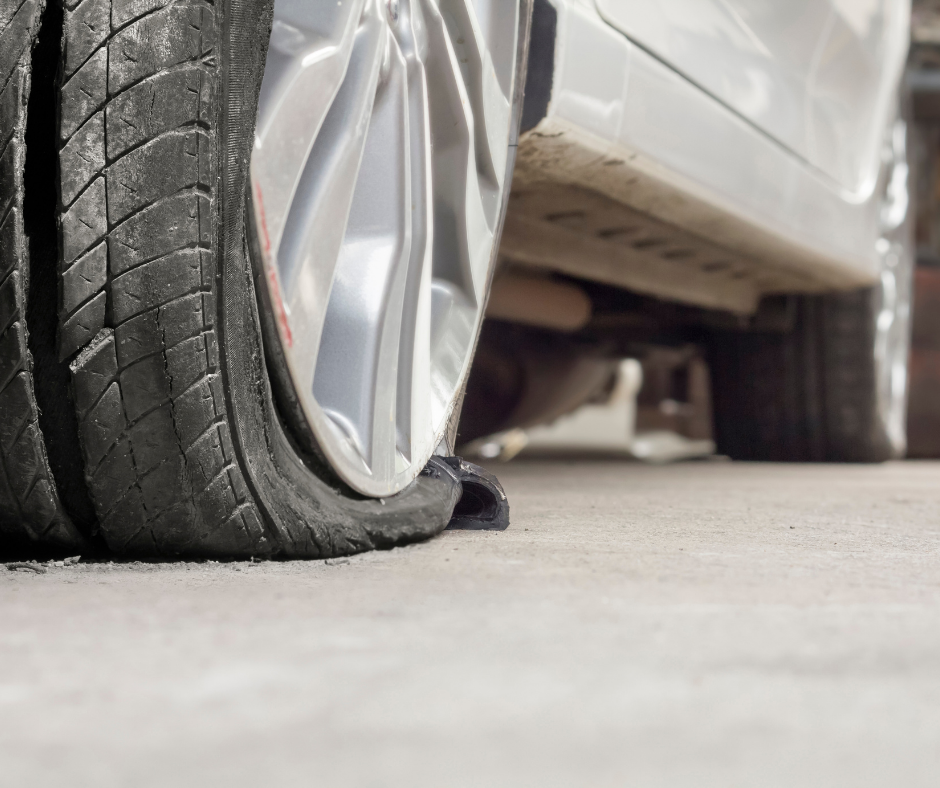 Let's set up an operation algorithm when a flat tire is detected and figure out what to do right away and what to choose later.
Let's set up an operation algorithm when a flat tire is detected and figure out what to do right away and what to choose later.
What to do when you find a puncture
Having found a flat tire, first of all you need to stop in a safe place, turn on the emergency alarm, assess visibility and, if necessary, set an emergency stop sign: according to traffic rules, it is installed at least 15 meters from the car in built-up area and at least 30 meters outside the built-up area. When choosing where to stop, consider the space to the side of the vehicle to handle a flat tire. You should not stop right on the road and in places where stopping and parking are prohibited: even if a punctured wheel belongs to the conditions of a forced stop, it is quite possible to drive several tens of meters on it to choose a safe and convenient parking place. At night or in conditions of limited visibility (for example, in fog or rain), it is imperative to wear a vest with retroreflective elements - this is required by clause 2. 3.4 of the SDA and common sense.
3.4 of the SDA and common sense.
Now you can start working on the wheel. We will sequentially consider several options for action, and then move on to ways to repair a damaged tire.
The most obvious solution to a flat tire is to replace it. If you have a spare tire that you are sure is in good condition, the best option is to install it and visit a tire shop to repair a punctured tire - such repairs will be more reliable and of high quality than doing it yourself.
If you do not have a suitable spare tire, but you do have a pump or compressor, you can assess the damage to the tire and try to pump it up again to get to the tire shop. It is better to start searching for an air leak with a valve (aka “nipple” or “nipple”): often a faulty spool becomes the cause of a flat tire. It is easy to check it: unscrew the protective cap (if there is one), pour water on it (or slobber it, as in childhood): air bubbles will leak. In this case, you can try to replace the spool valve by unscrewing it and screwing in a new one, but if there is no new valve, as well as a store nearby, you can try just unscrewing and screwing it back in.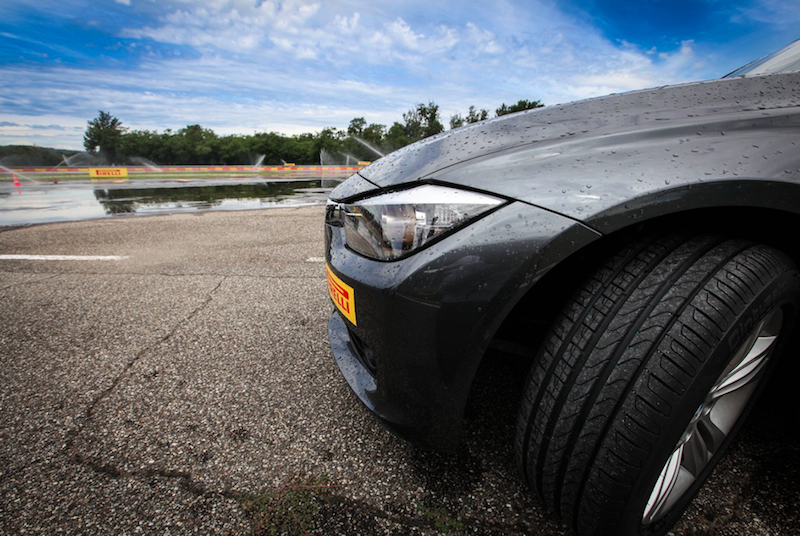 Regardless of whether it helped or not, you need to visit a tire shop to replace the entire spool or valve.
Regardless of whether it helped or not, you need to visit a tire shop to replace the entire spool or valve.
If the valve is tight and the tire is flat, it is most likely a puncture. The easiest way to find a puncture that is free of foreign objects is to pour water on the tire while looking at the surface: the damage will reveal itself as air bubbles. However, often the cause of the puncture can be found along with it: a self-tapping screw, nail or other arbitrary object sticking out of the wheel will clearly indicate the place of depressurization. In this case, you do not need to immediately remove the foreign object from the tire: it partially seals the hole, and if the pressure loss is slow, you can try to pump up the wheel and drive to the tire shop.
The same goes for wheels that are leaking from the rim or from a faulty valve. Usually, in this case, the air is bled slowly, and you can pump up the wheel and have time to get to the place of repair. By the way, rim leakage can occur due to disk deformation upon impact - for example, when hitting a pit with sharp edges. Such situations are fraught with damage to both the disk and the sidewall of the tire, in which case the disk will need to be corrected, and the tire repaired or even replaced. To avoid rim leaks, you need to inspect the rims every time you change tires. The loss of tightness occurs either due to corrosion or due to disc deformation, and not only steel, but also light alloy wheels can corrode. So if you see paint blistering or rust on the rim, the tires need to be put on rim sealant: when changing tires, this will be cheaper than the subsequent removal and re-tire to fix a leak on the rim.
Such situations are fraught with damage to both the disk and the sidewall of the tire, in which case the disk will need to be corrected, and the tire repaired or even replaced. To avoid rim leaks, you need to inspect the rims every time you change tires. The loss of tightness occurs either due to corrosion or due to disc deformation, and not only steel, but also light alloy wheels can corrode. So if you see paint blistering or rust on the rim, the tires need to be put on rim sealant: when changing tires, this will be cheaper than the subsequent removal and re-tire to fix a leak on the rim.
If you find a puncture, but there are no foreign objects in it, and you do not have a spare wheel and tire repair kits, there is another popular method of temporary "repair". You can screw a self-tapping screw into the found hole - if, of course, you have one. In extreme cases, you can look for a self-tapping screw in the cabin by unscrewing it from some interior detail. This method cannot be called reliable: it is unlikely to ensure complete tightness of the wheel, but at least it can help you get to the nearest tire shop.
And a couple more useful remarks. If the wheel is completely flat, then it is easier to inflate it without a spool: the latter must be unscrewed, then the tire must be inflated and quickly screwed back in. The fact is that the spool itself, when inflated, resists the compressor, and in the event of a loose fit of a flat tire to the disk, the power of a simple magazine compressor may not be enough, and the absence of a spool helps to increase air flow and facilitate the operation of the compressor. If this does not help, you can jack up the car by hanging a flat tire: this will improve the fit of the tire to the disk, and the chances of inflating the tire will increase.
On-Site Repair Methods
Now let's look at the options for repairing a tire yourself using special materials that you should take with you or, if a puncture caught you in the city, buy it at the nearest car shop.
1. The most common, cheapest and easiest way to do it yourself is to install a raw rubber band. The harnesses are sold complete with an abrasive awl to expand the hole in the tire and improve the contact of the repair harness with its edges, as well as a needle for installing the harness and an adhesive to fix it and at the same time seal the puncture. When choosing a repair kit in a store, you should pay attention to the following nuances:
The harnesses are sold complete with an abrasive awl to expand the hole in the tire and improve the contact of the repair harness with its edges, as well as a needle for installing the harness and an adhesive to fix it and at the same time seal the puncture. When choosing a repair kit in a store, you should pay attention to the following nuances:
Install the harness in the following order. First, the found hole is expanded with an abrasive awl - you need to insert and remove it several times into the puncture site. Then the tourniquet is inserted into the eye of the needle, and glue is applied to it. After that, the needle with the tourniquet must be inserted into the hole in the tire and pulled out sharply - so that the tourniquet remains in the hole, and the needle comes out without it.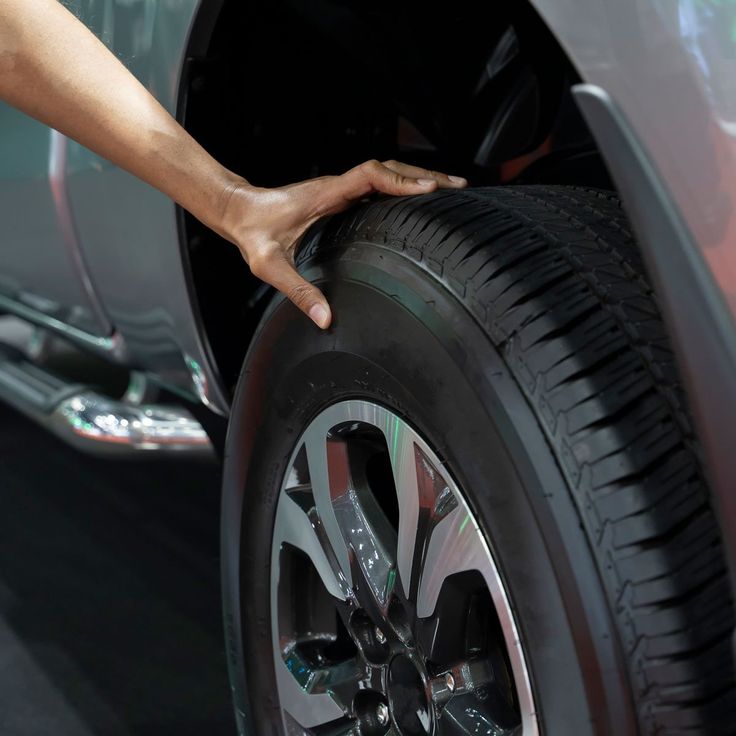 If everything worked out, it remains only to cut the end of the harness flush with the surface of the tire and pump up the wheel.
If everything worked out, it remains only to cut the end of the harness flush with the surface of the tire and pump up the wheel.
The advantages of harness repair are quite decent reliability, simplicity and low cost. On a well-repaired tire, you can drive for a long time, and if the repair site starts to poison, you can either replace the harness or have the tire repaired in a quality service. Among the minuses is the possibility of damaging the cord during installation, as well as lower reliability compared to “full-fledged” repair methods in a tire shop. Strictly speaking, a tourniquet is still a temporary repair, so if it is possible to pump up a wheel and get to a tire fitting, then it is better not to enlarge the hole in the tire and get to the experts.
2. The second repair option is aerosol liquid sealants sold in cans. To repair a punctured tire with sealant, you need to remove the foreign object from the puncture site, then pour the sealant into the wheel through the valve, twist it to distribute the composition inside the tire, pump up the wheel and drive several kilometers at low speed for the final uniform distribution of the sealant.
The advantage of this repair is that it is easier and less labor intensive than installing a harness. However, there are also disadvantages: the larger the hole, the higher the chance that the sealant will not be able to eliminate it, and such a repair can affect the wheel balance. Compared to a tourniquet, it can be considered even less reliable and preferable, but simpler.
Repair options at a tire shop
If you put in a spare tire and brought the wheel to a tire shop, you may also be offered several repair options. Consider the most popular with an indication of the advantages and disadvantages.
1. The first repair method is the same harness installation as described above. As we remember, the tourniquet refers to a temporary repair, so among tire specialists this method is considered bad form, but many workshops do not exclude it from the list of services. All the advantages and disadvantages are the same here: such a repair will be the fastest, simplest and cheapest, but less reliable than other methods. It is worth choosing it in cases where the price and / or speed of the procedure is more important to you than anything else. If quality is a priority, then it is better to fork out for the options listed below.
It is worth choosing it in cases where the price and / or speed of the procedure is more important to you than anything else. If quality is a priority, then it is better to fork out for the options listed below.
2. The second option for repairing a puncture is to install a patch on the inside of the tire, the so-called cold vulcanization. In this case, the tire is removed from the disk, the surface around the puncture is treated with an abrasive, and the damage is sealed with a special patch. This is a more preferred repair method than a tourniquet: it is more reliable and durable, especially in the case of side punctures, when not the thick tread part of the tire is damaged, but the thinner sidewall. Among the minuses, only a higher cost can be noted: in addition to the actual tire repair, you will have to pay for the removal and installation of the wheel (or do it yourself), tire fitting and balancing.
3. The third option is a "complex" of the first and second: installation of the so-called repair "fungus".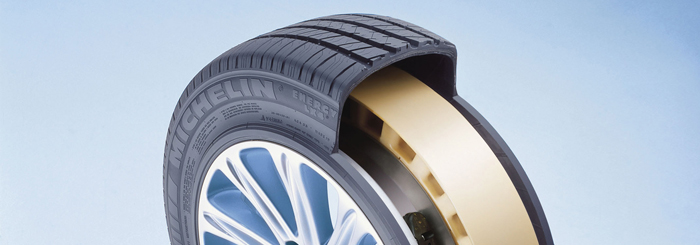 The “hat” of the fungus is a patch, and the “leg” is threaded from the inside of the tire to the outside. After gluing the patch, the excess part of the leg is cut off, as in the case of the tourniquet. Thus, not only the inner surface of the tire is closed, but also the hole itself. The advantages and disadvantages of this repair method are generally the same as those of a patch.
The “hat” of the fungus is a patch, and the “leg” is threaded from the inside of the tire to the outside. After gluing the patch, the excess part of the leg is cut off, as in the case of the tourniquet. Thus, not only the inner surface of the tire is closed, but also the hole itself. The advantages and disadvantages of this repair method are generally the same as those of a patch.
4. An extreme, “emergency” measure when repairing a punctured wheel is to install a camera in it. Typically, this method is used for tires that are no longer worth repairing, or “for reliability” after repairing a complex puncture. It should be understood that almost all modern tires are tubeless, that is, they are not designed to install a camera, so it’s not worth driving a wheel repaired in this way for a long time. Installing a tube is a temporary solution for riding until a new tire is purchased, and sometimes such wheels are left as spares. So this repair method can be kept in mind as a backup.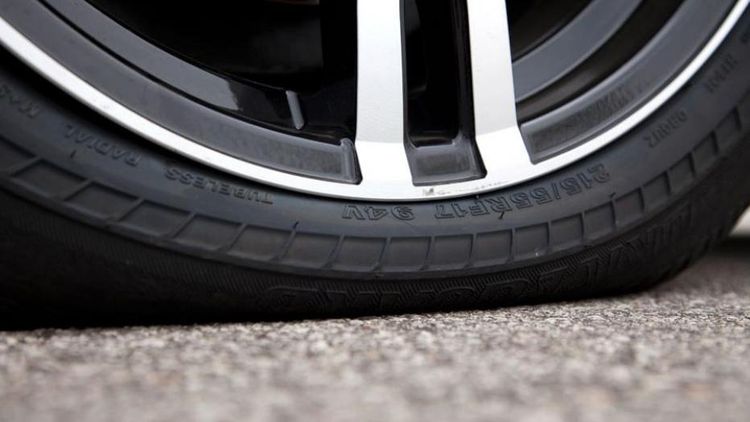
In conclusion
We have deliberately left out of the scope of this text such methods as combined repair of tires with a tourniquet and a patch and hot vulcanization. The first is used quite rarely and for specific damage, and it is enough just to know about its existence. Well, the second is used to repair serious side cuts, and it is not only rare, but also very expensive. The cut site in this case is prepared, filled with raw rubber and processed with a hot press for vulcanization. Equipment for this procedure is not available in every tire shop, and the cost of repair can be about half the cost of a new tire.
interesting Popular questions
Test drives / Test drive Haval Dargo vs Mitsubishi Outlander: the dog is barking, the stranger is coming In the Haval dealership in the south of Moscow, life is in full swing: buyers look at cars, communicate with managers and sign some papers.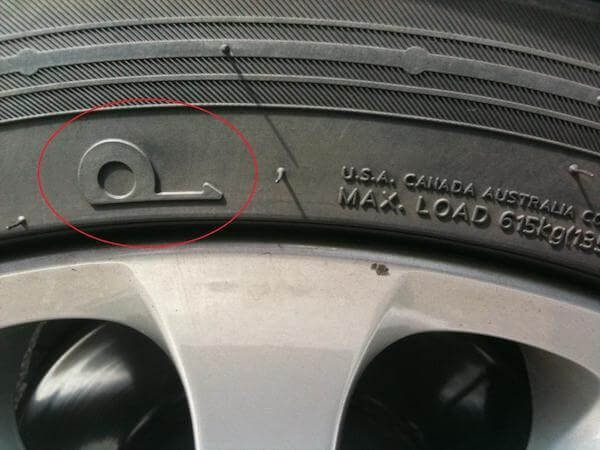 While I was waiting for the test Dargo, the same cross... 164897 205 09/13/2022
While I was waiting for the test Dargo, the same cross... 164897 205 09/13/2022
Test drives / Test drive Motor from Mercedes, emblem from Renault, assembly from Dacia: test drive of the European Logan 1.0 It would seem that what's new can be told about the second generation Renault Logan, known to every Russian taxi driver, as they say, up and down? However, this car has... 13601 ten 41 08/13/2022
Test drives / Test drive Geely Coolray vs Haval Jolion: Free Cheese? If! Do you want to buy a car today with a full warranty, on credit at an adequate rate, without wild dealer markups? Now this is still a task, because a full-fledged chain of "representation - s.